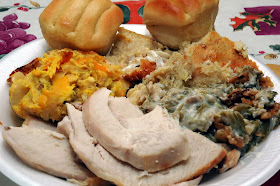Think you can’t take that pie to Grandma’s house this holiday season? Think again. This article caught my eye. It details what food items you can and can’t carry on a plane during the holidays. According to the Transportation Security Administration (TSA):
- A pie or cake can be carried on board through security checkpoints but it will be subjected to additional screening.
- Jam or jelly? Place in your checked luggage instead of carrying it on the plane, or ship it. They violate the rule of no more than 3.4 ounces of liquid, gel or aerosol that can be carried on board (and placed in a 1-quart sized plastic bag for screening purposes). Other items to put in your checked luggage or shipped – cranberry sauce, dip, sauce, salsa, gravy, maple syrup, oil, vinegar, wine, liquor, beer.
By the way, nonedible items that also won’t get through security screening are snowglobes and perfume.
A few more tips for carrying food gifts (or other gifts) through security:
- Don’t gift-wrap them, they may need to be unwrapped during screening.
- For fruit-lovers, unpeeled fruit is OK as is when going through security. But if you’ve partially eaten the fruit, it must be wrapped.
Remember, all food is screened so be forewarned. Not sure if your food will get through security? You can go to the TSA website for more information and to download “My TSA” mobile apps.
Contributor: Ellen Schuster, M.S., R.D., Associate State Specialist, University of Missouri Extension, schusterer@missouri.edu, 573-882-1933











